
French and Indian War
The French and Indian War pitted the colonies of British America against those of New France, each side supported by military units from the parent country and by Native American allies.

The French and Indian War pitted the colonies of British America against those of New France, each side supported by military units from the parent country and by Native American allies.
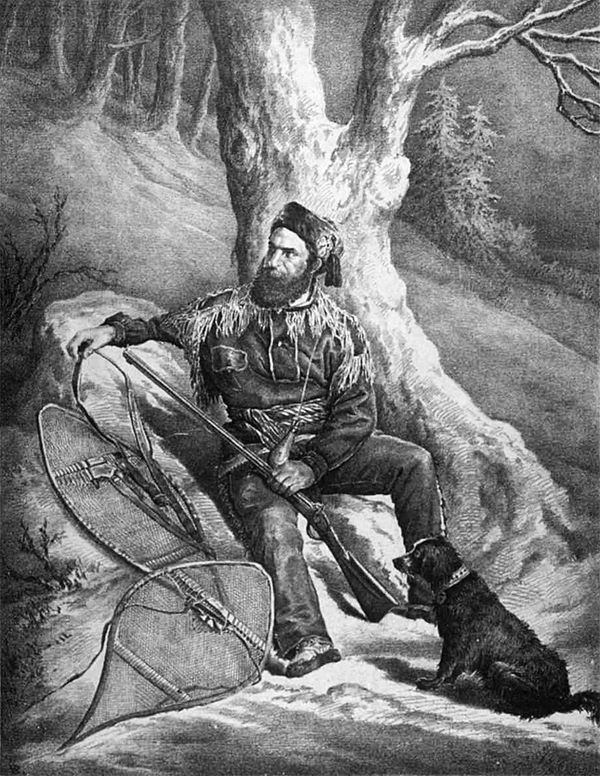
The Seven Years' War (1756–1763) was a global conflict, "a struggle for global primacy between Britain and France", which also had a major effect on the Spanish Empire. Long-standing colonial rivalries between Britain against France and Spain in North America and the Caribbean islands were fought on a grand scale with consequential results.
Causes and Origins of the War:

The Battle of Jumonville Glen, also known as the Jumonville affair, was the opening battle of the French and Indian War, fought on May 28, 1754, near present-day Hopwood and Uniontown in Fayette County, Pennsylvania. A company of colonial militia from Virginia under the command of Lieutenant Colonel George Washington, and a small number of Mingo warriors led by the chieftain Tanacharison (also known as the "Half King"), ambushed a force of 35 Canadiens under the command of Joseph Coulon de Villiers de Jumonville. A larger French Canadien force had driven off a small crew attempting to construct a British fort under the auspices of the Ohio Company at present-day Pittsburgh, Pennsylvania, land claimed by the French. A British colonial force led by George Washington was sent to protect the fort under construction. The French Canadiens sent Jumonville to warn Washington about encroaching on French-claimed territory. Washington was alerted to Jumonville's presence by Tanacharison, and they joined forces to ambush the Canadien camp. Washington's force killed Jumonville and some of his men in the ambush, and captured most of the others. The exact circumstances of Jumonville's death are a subject of historical controversy and debate. Since Britain and France were not then at war, the event had international repercussions, and was a contributing factor in the start of the Seven Years' War in 1756. After the action, Washington retreated to Fort Necessity, where Canadien forces from Fort Duquesne compelled his surrender.

The Albany Congress was a meeting of representatives sent by the legislatures of seven of the British colonies in British America to discuss better relations with the Native American tribes and common defensive measures against the French threat from Canada in the opening stage of the French and Indian War, the North American front of the Seven Years' War between Great Britain and France.
Delegates did not have the goal of creating an American nation; rather, they were colonists with the more limited mission of pursuing a treaty with the Mohawks and other major Iroquois tribes. This was the first time that American colonists had met together, and it provided a model that came into use in setting up the Stamp Act Congress in 1765, as well as the First Continental Congress in 1774, which were preludes to the American Revolution.

The Battle of Fort Necessity (also called the Battle of the Great Meadows) took place on July 3, 1754, in what is now Farmington in Fayette County, Pennsylvania. The engagement, along with the May 28 skirmish known as the Battle of Jumonville Glen, was George Washington's first military experience and the only surrender of his military career. The Battle of Fort Necessity began the French and Indian War, which later spiraled into the global conflict known as the Seven Years' War.
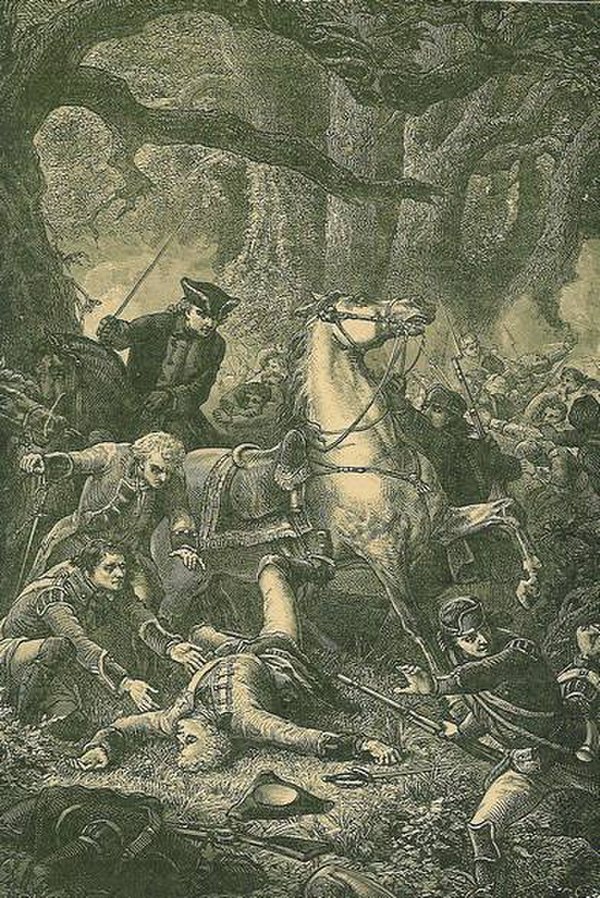
The Braddock expedition, also called Braddock's campaign or (more commonly) Braddock's Defeat, a failed British military expedition, attempted to capture the French Fort Duquesne (established in 1754, located in present-day downtown Pittsburgh) in the summer of 1755, during the French and Indian War of 1754 to 1763. The British troops suffered defeat at the Battle of the Monongahela on July 9, 1755, and the survivors retreated. The expedition takes its name from General Edward Braddock (1695–1755), who led the British forces and died in the effort. Braddock's defeat was a major setback for the British in the early stages of the war with France; John Mack Faragher characterises it as one of the most disastrous defeats for the British in the 18th century.

The Battle of Fort Beauséjour was fought on the Isthmus of Chignecto and marked the end of Father Le Loutre's War and the opening of a British offensive in the Acadia/Nova Scotia theatre of the Seven Years' War, which would eventually lead to the end of the French colonial empire in North America. The battle also reshaped the settlement patterns of the Atlantic region, and laid the groundwork for the modern province of New Brunswick.Beginning June 3, 1755, a British army under Lieutenant-Colonel Robert Monckton staged out of nearby Fort Lawrence, besieged the small French garrison at Fort Beauséjour with the goal of opening the Isthmus of Chignecto to British control. Control of the isthmus was crucial to the French because it was the only gateway between Quebec and Louisbourg during the winter months. After two weeks of siege, Louis Du Pont Duchambon de Vergor, the fort's commander, capitulated on June 16.

The Battle of the Monongahela (also known as the Battle of Braddock's Field and the Battle of the Wilderness) took place on 9 July 1755, at the beginning of the French and Indian War, at Braddock's Field in what is now Braddock, Pennsylvania, 10 miles (16 km) east of Pittsburgh. A British force under General Edward Braddock, moving to take Fort Duquesne, was defeated by a force of French and Canadian troops under Captain Daniel Liénard de Beaujeu with its American Indian allies.
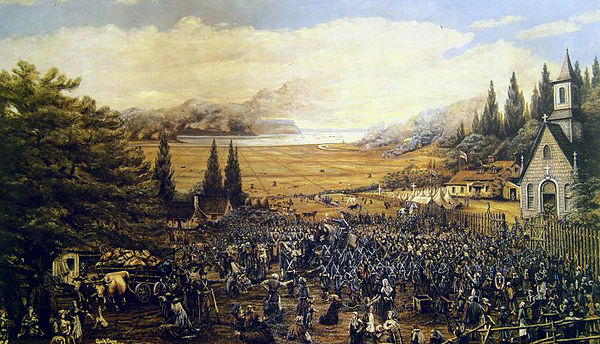
The Expulsion of the Acadians, also known as the Great Upheaval, the Great Expulsion, the Great Deportation, and the Deportation of the Acadians was the forced removal by the British of the Acadian people from the present-day Canadian Maritime provinces of Nova Scotia, New Brunswick, Prince Edward Island and northern Maine — parts of an area historically known as Acadia, causing the death of thousands of people. The Expulsion (1755–1764) occurred during the French and Indian War (the North American theatre of the Seven Years' War) and was part of the British military campaign against New France. The British first deported Acadians to the Thirteen Colonies, and after 1758, transported additional Acadians to Britain and France. In all, of the 14,100 Acadians in the region, approximately 11,500 Acadians were deported. A census of 1764 indicates that 2,600 Acadians remained in the colony having eluded capture.
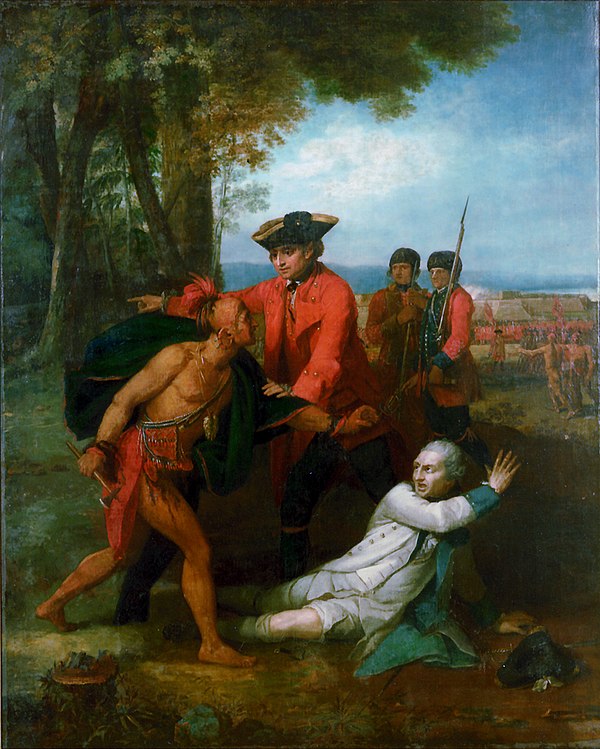
The Battle of Lake George was fought on 8 September 1755, in the north of the Province of New York. It was part of a campaign by the British to expel the French from North America, in the French and Indian War.On one side were 1,500 French, Canadian, and Indian troops under the command of the Baron de Dieskau. On the other side were 1,500 colonial troops under William Johnson and 200 Mohawks led by noted war chief Hendrick Theyanoguin. The battle consisted of three separate phases and ended in victory for the British and their allies. After the battle, Johnson decided to build Fort William Henry in order to consolidate his gains.

The Battle of Fort Oswego was one in a series of early French victories in the North American theatre of the Seven Years' War won in spite of New France's military vulnerability. During the week of August 10, 1756, a force of regulars and Canadian militia under General Montcalm captured and occupied the British fortifications at Fort Oswego, located at the site of present-day Oswego, New York.


The British government realized that with the Fortress of Louisbourg under French control, the Royal Navy could not sail up the St. Lawrence River unmolested for an attack on Quebec. After an expedition against Louisbourg in 1757 led by Lord Loudon was turned back due to a strong French naval deployment, the British under the leadership of William Pitt resolved to try again with new commanders. Pitt assigned the task of capturing the fortress to Major General Jeffery Amherst. Amherst's brigadiers were Charles Lawrence, James Wolfe and Edward Whitmore, and command of naval operations was assigned to Admiral Edward Boscawen.
Continuing heavy seas and the difficulty inherent to moving siege equipment over boggy terrain delayed the commencement of the formal siege. In the meantime, Wolfe was sent with 1,220 picked men around the harbour to seize Lighthouse Point, which dominated the harbour entrance. This he did on 12 June. After eleven days, on 19 June, the British artillery batteries were in position and the orders were given to open fire on the French. The British battery consisted of seventy cannons and mortars of all sizes. Within hours, the guns had destroyed walls and damaged several buildings. On 21 July a mortar round from a British gun on Lighthouse Point struck a 64-gun French ship of the line, Le Célèbre , and set it ablaze. A stiff breeze fanned the fire, and shortly after Le Célèbre caught fire, two other French ships, L'Entreprenant and Le Capricieux, had also caught fire. L'Entreprenant sank later in the day, depriving the French of the largest ship in the Louisbourg fleet. The next major blow to French morale came on the evening of 23 July, at 10:00. A British "hot shot" set the King's Bastion on fire. The King's Bastion was the fortress headquarters and the largest building in North America in 1758. Its destruction eroded confidence and reduced morale in the French troops and their hopes to lift the British siege.
Most historians regard the British actions of 25 July as the "straw that broke the camel's back". Using a thick fog as cover, Admiral Boscawen sent a cutting-out party to destroy the last two French ships in the harbour. The British raiders eliminated these two French ships of the line, capturing Bienfaisant and burning Prudent, thus clearing the way for the Royal Navy to enter the harbour. James Cook, who later became famous as an explorer, took part in this operation and recorded it in his ship's log book.
The fall of the fortress led to the loss of French territory across Atlantic Canada. From Louisbourg, British forces spent the remainder of the year routing French forces and occupying French settlements in what is today New Brunswick, Prince Edward Island and Newfoundland. The second wave of the Acadian expulsion began.
The loss of Louisbourg deprived New France of naval protection, opening the Saint Lawrence to attack. Louisbourg was used in 1759 as the staging point for General Wolfe's famous siege of Quebec ending French rule in North America. Following the surrender of Quebec, British forces and engineers set about methodically destroying the fortress with explosives, ensuring that it could not return to French possession a second time in any eventual peace treaty. By 1760, the entire fortress was reduced to mounds of rubble.

The British military campaigns for the North American theatre of the Seven Years' War in 1758 contained three primary objectives. Two of these objectives, captures of Fort Louisbourg and Fort Duquesne met with success. The third campaign, an expedition involving 16,000 men under the command of General James Abercrombie, was disastrously defeated on July 8, 1758, by a much smaller French force when it attempted the capture of Fort Carillon (known today as Fort Ticonderoga).

British Lieutenant Colonel John Bradstreet led an army of over 3,000 men, of whom about 150 were regulars and the remainder were provincial militia. The army besieged the 110 people inside the fort and won their surrender two days later, cutting one of the two major communication and supply lines between the major eastern centres of Montreal and Quebec City and France's western territories (the northern route, along the Ottawa River, remained open throughout the war). The British captured goods worth 800,000 livres from the trading post.

The attack on Fort Duquesne was part of a large-scale British expedition with 6,000 troops led by General John Forbes to drive the French out of the contested Ohio Country (the upper Ohio River Valley) and clear the way for an invasion of Canada. Forbes ordered Major James Grant of the 77th Regiment to reconnoiter the area with 850 men. Grant, apparently on his own initiative, proceeded to attack the French position using traditional European military tactics. His force was out-maneuvered, surrounded, and largely destroyed by the French and their native allies led by François-Marie Le Marchand de Lignery. Major Grant was taken prisoner and the British survivors retreated fitfully to Fort Ligonier.
After repulsing this advance party, the French, deserted by some of their native allies and vastly outnumbered by the approaching Forbes, blew up their magazines and burnt Fort Duquesne. In November the French withdrew from the Ohio Valley and British colonists erected Fort Pitt on the site.

The Treaty of Easton was a colonial agreement in North America signed in October 1758 during the French and Indian War (Seven Years' War) between British colonials and the chiefs of 13 Native American nations, representing tribes of the Iroquois, Lenape (Delaware), and Shawnee.
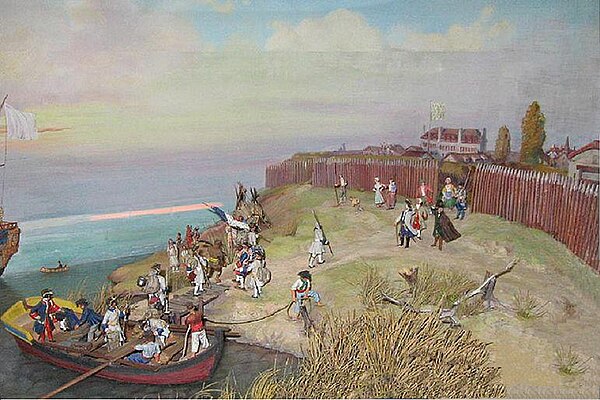

The 1759 Battle of Ticonderoga was a minor confrontation at Fort Carillon (later renamed Fort Ticonderoga) on July 26 and 27, 1759, during the French and Indian War. A British military force of more than 11,000 men under the command of General Sir Jeffery Amherst moved artillery to high ground overlooking the fort, which was defended by a garrison of 400 Frenchmen under the command of Brigadier General François-Charles de Bourlamaque.

The Battle of the Plains of Abraham, also known as the Battle of Quebec, was a pivotal battle in the Seven Years' War (referred to as the French and Indian War to describe the North American theatre). The battle, which began on 13 September 1759, was fought on a plateau by the British Army and Royal Navy against the French Army, just outside the walls of Quebec City on land that was originally owned by a farmer named Abraham Martin, hence the name of the battle. The battle involved fewer than 10,000 troops in total, but proved to be a deciding moment in the conflict between France and Britain over the fate of New France, influencing the later creation of Canada.

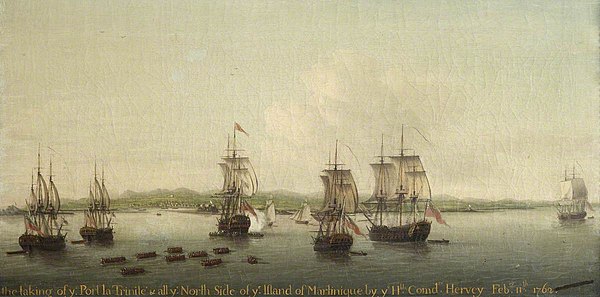
The British expedition against Martinique was a military action that took place in January and February 1762. It was part of the Seven Years' War. Martinique was returned to France after the 1763 Treaty of Paris.

The siege of Havana was a successful British siege against Spanish-ruled Havana that lasted from March to August 1762, as part of the Seven Years' War. After Spain abandoned its former policy of neutrality by signing the family compact with France, resulting in a British declaration of war on Spain in January 1762, the British government decided to mount an attack on the important Spanish fortress and naval base of Havana, with the intention of weakening the Spanish presence in the Caribbean and improving the security of its own North American colonies. A strong British naval force consisting of squadrons from Britain and the West Indies, and the military force of British and American troops it convoyed, were able to approach Havana from a direction that neither the Spanish governor nor the Admiral expected and were able to trap the Spanish fleet in the Havana harbour and land its troops with relatively little resistance.
Havana remained under British occupation until February 1763, when it was returned to Spain under the 1763 Treaty of Paris that formally ended the war.

Most of the fighting ended in America in 1760, although it continued in Europe between France and Britain. The notable exception was the French seizure of St. John's, Newfoundland. General Amherst heard of this surprise action and immediately dispatched troops under his nephew William Amherst, who regained control of Newfoundland after the Battle of Signal Hill in September 1762.
The Battle of Signal Hill was fought on September 15, 1762, and was the last battle of the North American theatre of the Seven Years' War. A British force under Lieutenant Colonel William Amherst recaptured St. John's, which the French had seized earlier that year in a surprise attack.
The Treaty of Paris, also known as the Treaty of 1763, was signed on 10 February 1763 by the kingdoms of Great Britain, France and Spain, with Portugal in agreement, after Great Britain and Prussia's victory over France and Spain during the Seven Years' War. The signing of the treaty formally ended conflict between France and Great Britain over control of North America (the Seven Years' War, known as the French and Indian War in the United States), and marked the beginning of an era of British dominance outside Europe. Great Britain and France each returned much of the territory that they had captured during the war, but Great Britain gained much of France's possessions in North America.
The war changed economic, political, governmental, and social relations among the three European powers, their colonies, and the people who inhabited those territories. France and Britain both suffered financially because of the war, with significant long-term consequences. Britain gained control of French Canada and Acadia, colonies containing approximately 80,000 primarily French-speaking Roman Catholic residents. The Quebec Act of 1774 addressed issues brought forth by Roman Catholic French Canadians from the 1763 proclamation, and it transferred the Indian Reserve into the Province of Quebec. The Seven Years' War nearly doubled Great Britain's national debt. The elimination of French power in America meant the disappearance of a strong ally for some Indian tribes.

Explore the rich history of the American Revolution through this captivating painting of the Continental Army. Perfect for history enthusiasts and art collectors, this piece brings to life the bravery and struggles of early American soldiers.
APPENDIX 1

APPENDIX 2


British Commander-in-chief

British General
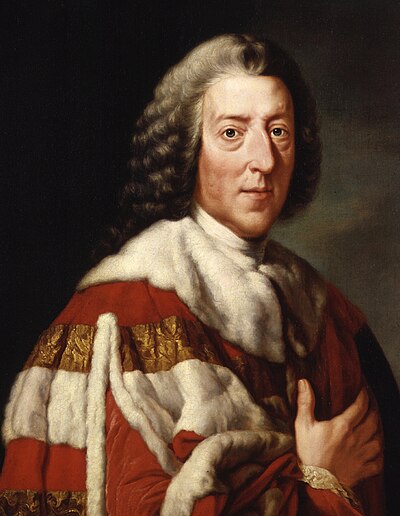
Prime Minister of Great Britain

French Military Commander

Lieutenant-Colonel